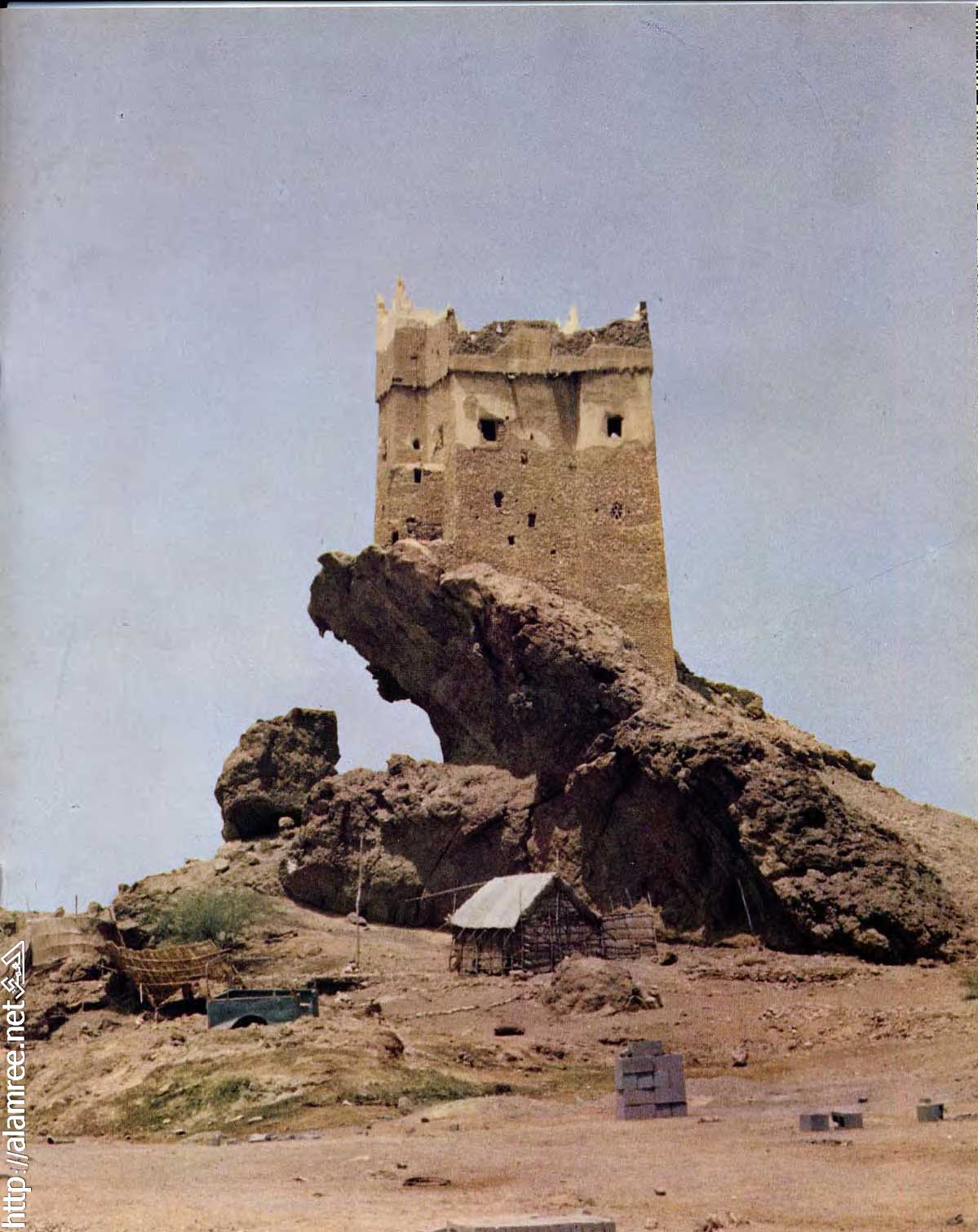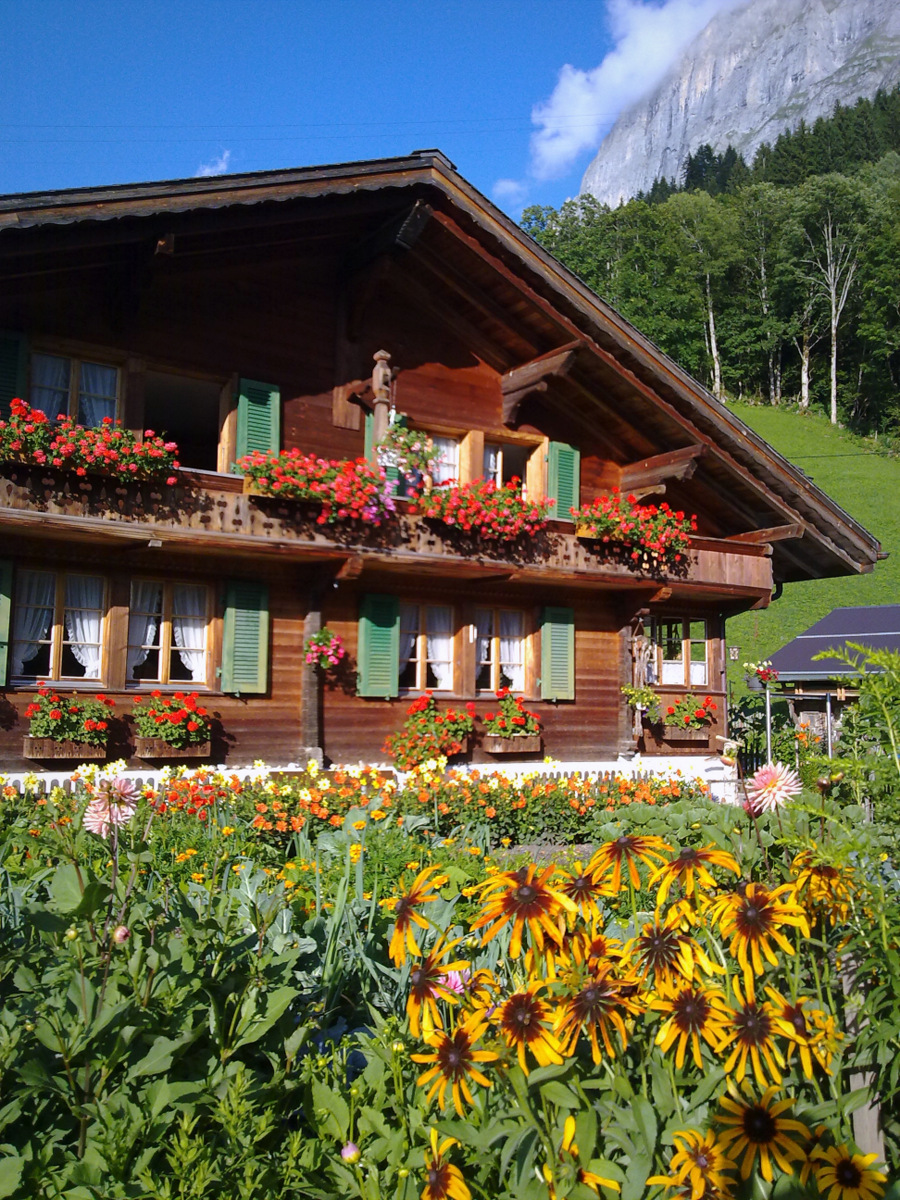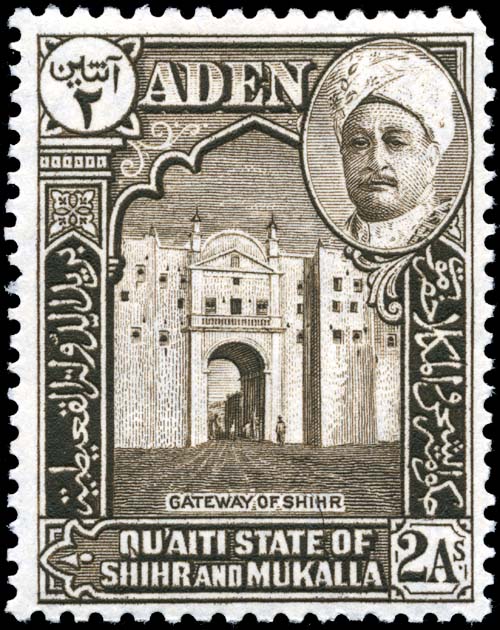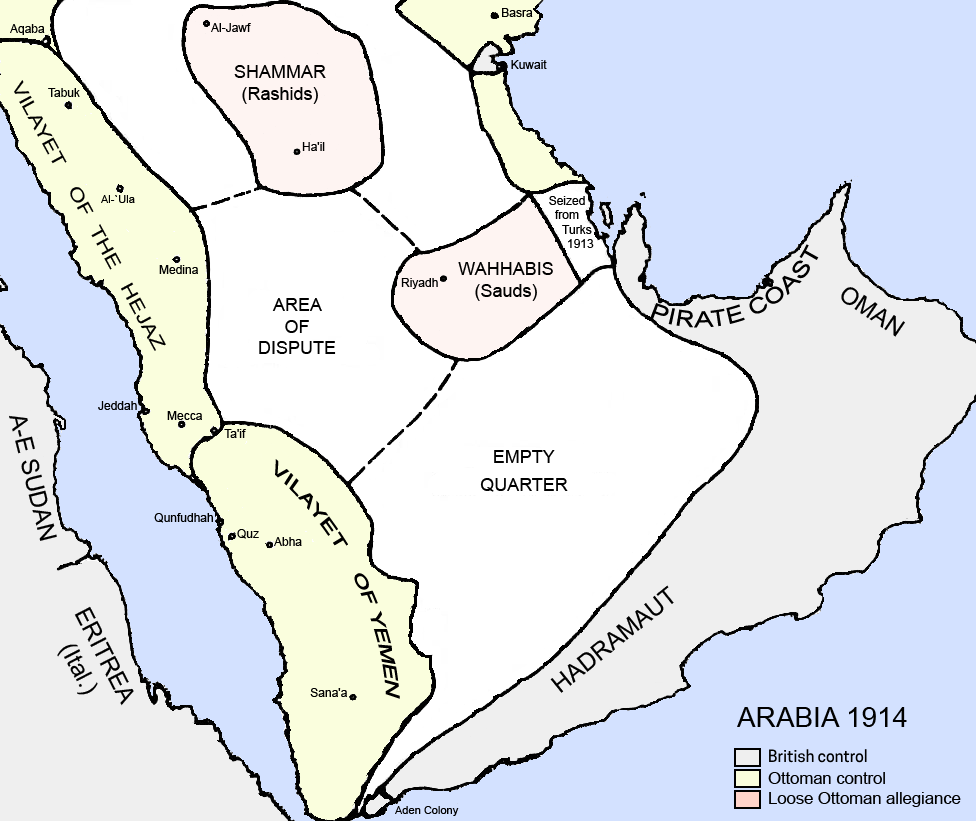|
Al-Ghwayzi Fort
Fort Al-Ghwayzi ( ar, حِصْن ٱلْغوَيْزِي, Ḥiṣn Al-Ghwayzī), or "Al-Waizi Fortress", is one of the old fortresses in Al- Mukalla, the capital of Hadhramaut Governorate in Yemen. It is considered an architectural masterpiece built on the foot of a rock designed to protect the city from Bedouin attacks. History The Fortress of Al-Ghwayzi is one of the important historic fortresses in Yemen. It dates back to 1716 when the sultans of the Emirate of Al-Kassad ruled the Hadhramaut area. The fort is located in the northeastern entrance of the city of Mukalla, a historic center for visitors surrounded by a public park. Historical sources indicate that the purpose of its establishment was to monitor the military raids, which targeted the city of Mukalla on the coast of the Arabian Sea from the direction of the north, especially the raids launched by the Sultanate of Kathiriyya occupied the city of present Seiyun, and the raids launched by the Sultanate of Qu'ait ... [...More Info...] [...Related Items...] OR: [Wikipedia] [Google] [Baidu] |
Mukalla
Mukalla ( ar, ٱلْمُكَلَّا, ') is a seaport and the capital city of Yemen's largest governorate, Hadhramaut. The city is in the southern part of the Arabian Peninsula on the Gulf of Aden, on the shores of the Arabian Sea, about east of Aden. It is the most important port in the Hadhramaut and the fifth-largest city in Yemen, with a population of approximately 500,000. The city is served by the nearby Riyan International Airport. History Mukalla is not far from Cane or Qana, the ancient principal Hadrami trading post between India and Africa, with incense producing areas in its hinterland. Mukalla was founded in 1035 as a fishing settlement. This area was part of Oman until the middle of the 11th century, and later this area became part of Yemen. After witnessing a struggle for control by the Kathiri and Qu'aiti Sultanates in the 19th and 20th centuries, it became the capital of the Qu'aiti State of Hadhramaut, and then in 1967, it became a part of South Yemen. The Qu ... [...More Info...] [...Related Items...] OR: [Wikipedia] [Google] [Baidu] |
Seiyun
Seiyun (also transliterated as ''Saywun'', ''Sayoun'' or ''Say'un''; ar, سَيْئُوْن Hadhrami pronunciation: , Literary Arabic: ; Old South Arabian: 𐩪𐩺𐩱𐩬 ''S¹yʾn'') is a city in the region and Governorate of Hadhramaut in Yemen. It is located in the middle of the Hadhramaut Valley, about from Mukalla, the capital of Mukalla District and the largest city in the area, via western route. It is also away from Shibam and away from Tarim, other large cities in the valley. It is said that the origin of the city was a resting point for travellers. There was a cafe with a woman named Seiyun there, and the area was named after her in her honor. Since then, the city has become the largest area of Hadhramaut valley. The most prominent villages surrounding the city include Madurah, Mérida, Burr, Hazkir, and Houta Sultana. It is served by Seiyun Airport. It is also well known for the Seiyun Palace of the Sultan of Kathiri built in 1920s with mud and stone ... [...More Info...] [...Related Items...] OR: [Wikipedia] [Google] [Baidu] |
Military Installations Established In 1716
A military, also known collectively as armed forces, is a heavily armed, highly organized force primarily intended for warfare. It is typically authorized and maintained by a sovereign state, with its members identifiable by their distinct military uniform. It may consist of one or more military branches such as an army, navy, air force, space force, marines, or coast guard. The main task of the military is usually defined as defence of the state and its interests against external armed threats. In broad usage, the terms ''armed forces'' and ''military'' are often treated as synonymous, although in technical usage a distinction is sometimes made in which a country's armed forces may include both its military and other paramilitary forces. There are various forms of irregular military forces, not belonging to a recognized state; though they share many attributes with regular military forces, they are less often referred to as simply ''military''. A nation's military may f ... [...More Info...] [...Related Items...] OR: [Wikipedia] [Google] [Baidu] |
Chalet
A chalet (pronounced in British English; in American English usually ), also called Swiss chalet, is a type of building or house, typical of the Alpine region in Europe. It is made of wood, with a heavy, gently sloping roof and wide, well-supported eaves set at right angles to the front of the house. Definition and origin The term ''chalet'' comes from the Arpitan-speaking part of Switzerland and the French Savoy region, and originally referred to the hut of a herder. It was often embedded in the ground for the sake of temperature buffering. Many chalets in the European Alps were originally used as seasonal farms for dairy cattle, which would be brought up from the lowland pastures during the summer months. The herders would live in the chalet and make butter and cheese in order to preserve the milk produced. These products would then be taken, with the cattle, back to the low valleys before the onset of the alpine winter. The chalets would remain locked and unused during t ... [...More Info...] [...Related Items...] OR: [Wikipedia] [Google] [Baidu] |
Slum
A slum is a highly populated urban residential area consisting of densely packed housing units of weak build quality and often associated with poverty. The infrastructure in slums is often deteriorated or incomplete, and they are primarily inhabited by impoverished people.What are slums and why do they exist? UN-Habitat, Kenya (April 2007) Although slums are usually located in s, in some countries they can be located in suburban areas where housing quality is low and living conditions are poor. While slums differ in size and other characteristics, most lack r ... [...More Info...] [...Related Items...] OR: [Wikipedia] [Google] [Baidu] |
Plaster
Plaster is a building material used for the protective or decorative coating of walls and ceilings and for Molding (decorative), moulding and casting decorative elements. In English, "plaster" usually means a material used for the interiors of buildings, while "render" commonly refers to external applications. Another imprecise term used for the material is stucco, which is also often used for plasterwork that is worked in some way to produce relief decoration, rather than flat surfaces. The most common types of plaster mainly contain either gypsum, lime plaster, lime, or cement plaster, cement,Franz Wirsching "Calcium Sulfate" in Ullmann's Encyclopedia of Industrial Chemistry, 2012 Wiley-VCH, Weinheim. but all work in a similar way. The plaster is manufactured as a dry powder and is mixed with water to form a stiff but workable paste immediately before it is applied to the surface. The reaction with water liberates heat through crystallization and the hydrated plaster then ha ... [...More Info...] [...Related Items...] OR: [Wikipedia] [Google] [Baidu] |
Sheikh
Sheikh (pronounced or ; ar, شيخ ' , mostly pronounced , plural ' )—also transliterated sheekh, sheyikh, shaykh, shayk, shekh, shaik and Shaikh, shak—is an honorific title in the Arabic language. It commonly designates a chief of a tribe or a royal family member in Arabian countries, in some countries it is also given to those of great knowledge in religious affairs as a surname by a prestige religious leader from a chain of Sufi scholars. It is also commonly used to refer to a Muslim religious scholar. It is also used as an honorary title by people claiming to be descended from Hasan ibn Ali and Husayn ibn Ali both patrilineal and matrilineal who are grandsons of the Islamic prophet Muhammad. The term is literally translated to " Elder" (is also translated to "Lord/Master" in a monarchical context). The word 'sheikh' is mentioned in the 23rd verse of Surah Al-Qasas in the Quran. Etymology and meaning The word in Arabic stems from a triliteral root connected with a ... [...More Info...] [...Related Items...] OR: [Wikipedia] [Google] [Baidu] |
Wadi Dawan
Wadi Dawan ( ar, وَادِي دَوْعَن, Wādī Daw‘an) is a town and desert valley in central Yemen. Located in Hadhramaut Governorate, it is noted for its mud brick buildings. Modern history On January 18, 2008, an ambush attack on Belgian tourists traveling in a convoy through the valley took place. A convoy of four jeeps carrying 15 tourists to Shibam were ambushed by gunmen in a hidden pickup truck. Two Belgian women, Claudine Van Caillie, of Bruges, 63, and Katrine Glorie, from East Flanders, 54, as well as two Yemenis, a driver and a guide, were killed; another man was also heavily wounded, several others suffered minor wounds.Deux Belges tuées au Yémen '' |
Ash Shihr
Ash-Shihr ( ar, ٱلشِّحْر, al-Shiḥr), also known as al-Shir or simply Shihr, is a coastal town in Hadhramaut, eastern Yemen. Ash-Shihr is a walled town located on a sandy beach. There is an anchorage but no docks; boats are used. The main export is fish oil. The town is divided in two by a ''wādi'' (dry riverbed) called al-Misyāl. The western quarter is called Majraf and the eastern al-Ramla. As of 1997 it had several souqs (markets): the Sūq al-Lakham, Sūq al-Hunūd, Sūq Shibām, etc. History The history of ash-Shihr (formerly also al-Asʿāʾ) can be traced back as far as about AD 780., at 47. It was a major port on the incense trade route as an exporter of frankincense to places as far as China. Ibn Khurradādhbih calls the area around ash-Shihr the ''bilād al-kundur'', Land of Incense. It was also known for its ambergris, ''ʿanbar Shiḥrī''. It was the main port of Hadhramaut until replaced by Mukalla in the 19th century. Local pottery production at Yadhg ... [...More Info...] [...Related Items...] OR: [Wikipedia] [Google] [Baidu] |
Qu'aiti
Qu'aiti, ar, ٱلْقُعَيْطِي '), officially the Qu'aiti State of Shihr and Mukalla ( ar, ٱلدَّوْلَة ٱلْقُعَيْطِيَّة ٱلْحَضْرَمِيَّة, Ad-Dawlah Al-Quʿayṭiyyah Al-Ḥaḍramiyyah or the Qu'aiti Sultanate of Shihr and Mukalla, ar, ٱلسَّلْطَنَة ٱلْقُعَيْطِيَّة فِي ٱلشِّحْر وَٱلْمُكَلَّا ' was a sultanate in the Hadhramaut region of the southern Arabian Peninsula, in what is now Yemen. Its capital was Mukalla, and it was divided into six provinces including Al-Mukalla, Ash-Shihr, Shibam, Du'an, the Western Province and Hajr. Apart from Al-Mukalla, Ash-Shihr and Shibam were the Sultanate's major cities. The Sultanate spanned the Indian Ocean coast up to the border of Mahra, encompassed Shabwa, the central valleys and oasis settlements of Hadhramaut, and controlled the southern Empty Quarter. History Sons of Umar bin Awadh al Qu'aiti, who became a jemadar in the forces of the Niza ... [...More Info...] [...Related Items...] OR: [Wikipedia] [Google] [Baidu] |
Kathiri
Kathiri ( ar, ٱلْكَثِيْرِي, al-Kathīrī), officially the Kathiri State of Seiyun ( ar, ٱلسَّلْطَنَة ٱلْكَثِيْرِيَّة - سَيْؤُوْن, al-Salṭanah al-Kathīrīyah - Sayʾūn), was a sultanate in the Hadhramaut region of the southern Arabian Peninsula, in what is now part of Yemen and the Dhofari region of Oman. History The Kathiri State was established in 1395 by Badr as-Sahab ibn al-Habrali Bu Tuwairik, who ruled until . The Kathiri conquered Ash-Shihr in the 1460s. The country inhabited by this tribe was formerly extensive, reaching from the Aulaqi districts on the west to the Maliri tribe on the east, and including the seaports of Mukalla and Shihr. Civil wars led to the interference of the Yafai, and much of the Kathiri territory came under the sway of the Kasadi and Qu'aiti. The Kathiris were eventually restricted to a small inland portion of Hadhramaut with their capital at Seiyun (Say'un). At the end of 1883, Sultan Abdulla b ... [...More Info...] [...Related Items...] OR: [Wikipedia] [Google] [Baidu] |
Hadhramaut Governorate
Hadhramaut or Hadramawt or Hadramout ( ar, حضرموت ''Ḥaḍramawt'') is a governorate of Yemen. Lying within the large historical region of Hadhramaut, it is the country's largest governorate. The capital of Hadhramut is the city of Mukalla. Other cities in Hadhramaut include the historical towns of Shibam, Sena, Seiyun, Tarim, and Ash Shihr. The Socotra Archipelago was transferred from the Adan Governorate to the Hadhramaut Governorate in 2004. It was subsequently separated to form the newly created Soqatra Governorate in December 2013. Districts Hadhramaut Governorate is divided into the following 28 districts, after the creation of Socotra Governorate on December 2013. These districts are further divided into sub-districts, and then further subdivided into villages: * Ad Dis District * Adh Dhlia'ah District * Al Abr District * Mukalla District * Mukalla City District * Al Qaf District * Al Qatn District * Amd District * Ar Raydah Wa Qusayar District * As Sawm ... [...More Info...] [...Related Items...] OR: [Wikipedia] [Google] [Baidu] |







